Dirt and Germs!
At Vista Farm we recycle all the stuff we used to put down the disposal to make rich, organic soil (compost) needed to help the vegetable garden. Purely organic soil is a great conditioner and a little horse or cow manure mixed in makes the best fertilizer you can find. That’s why we also compost at home where the ground is so hard you need a pick axe to break it up. Eons ago (that’s geology-speak for a very, very long time) Madisonville was the bottom of Lake Pontchartrain and for thousands of years sea creatures died and sank to the bottom leaving their shells to form a hard pack layer. The climate changed and today Madisonville is above sea level (but not by much) and you have to add dirt to the shell layer if you want anything except marsh plants to grow.
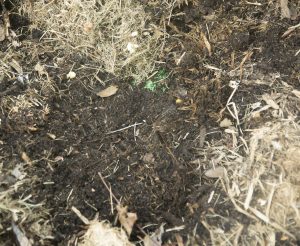
You can spend a bundle of money at the feed and seed store on a plastic compost bin with a nifty handle for turning it over and a door to put stuff in and take compost out, but I’m low-tech and thrifty and the Captain has a lot of scrap material in his junkyard. I found some old 2” x 10” lumber and got my helper to build a strong box about 6′ x 6′. He set it in the sun, covered the whole bottom and up the sides with a thick piece of tarp, stuck it with the pitch fork to put some drain holes in.
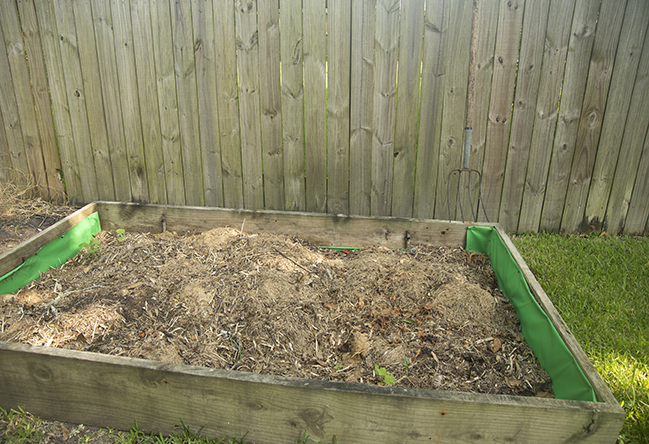
I began shredding and dumping in everything compostable. I bag up all the scraps from the kitchen except animal products and put them in the freezer until I have a few bags full, then haul it all to the compost box.

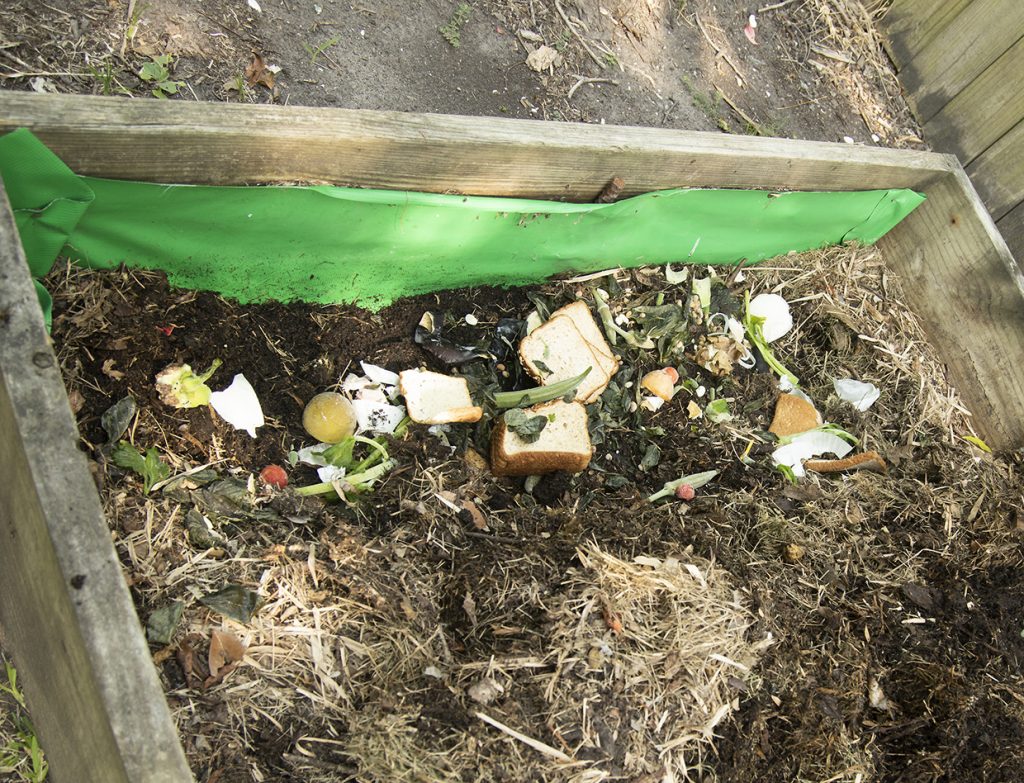
Kitchen scraps are mixed into the compost pile.
We have a bag on the lawnmower at home and dump all the chopped up grass clippings and leaves in the box. I dig down on one side where I dump the scraps and cover it up with the a mix of the old and less old stuff. You have to turn the pile with a pitchfork every couple of weeks, but the box was cheap and works fine. I think the pick axe was my father’s. The green tarp on the bottom deters roots from growing up in it. Somehow worms get in and proliferate.
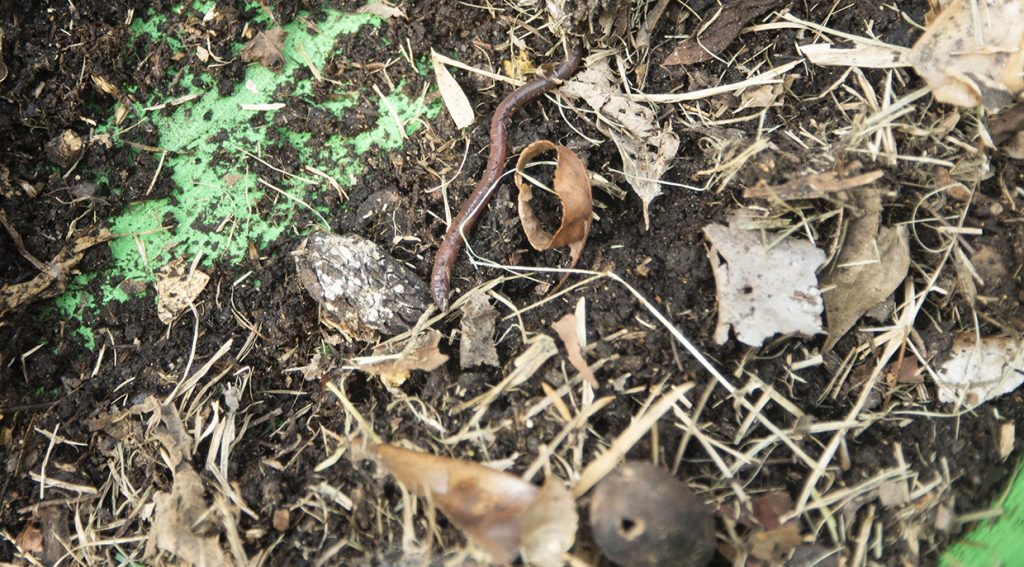
They help the decay process and bass love worms—big brownish red ones. Once I tried making a compost pile just on the ground with no containment, but the roots from nearby shrubbery, Green Briar and Virginia Creeper made it impossible to turn.
I heartily recommend composting no matter how small your plot, but there are some important considerations. Never put bones, oil or grease, meat, fish, feces, or any dairy product in your compost. First, every stray cat, possum, raccoon and dog in the neighborhood will find it, and second, when it decays it smells to high heaven. A little ripe (very old) horse or cow manure is good, though. You can even add a few paper towels (plain ones without colored ink), torn up cotton clothing, egg shells dryer lint, floor sweepings and hair (but no Swiffer, it’s non-biodegradable).
Brown is carbon and green is nitrogen and you need a combination of both. I don’t worry about proportions of each, but brown comes from dead leaves (but not pine straw that takes to long to break down), brown paper, sawdust, hay, dried flowers, etc. Green comes from kitchen vegetable scraps, clippings from the garden, lawn mower grass, even coffee grounds, and tea leaves. Experts tell you never to add weeds to your compost bin because the seeds won’t decay and will come up wherever you put them. That’s the last thing I’m worried about at Vista Farm where the blooming weeds are a blessing. Be sure to cover any new addition with the stuff that’s been in there for a while.
Water, bacteria, oxygen and sunlight eventually turn the pile into dirt, so either put a sprinkler on it once in a while or, if you live where it rains a lot, that might be enough. The time the mix takes to break down into dirt seems to depend a lot on the amount of water it gets. The less water the longer it takes.
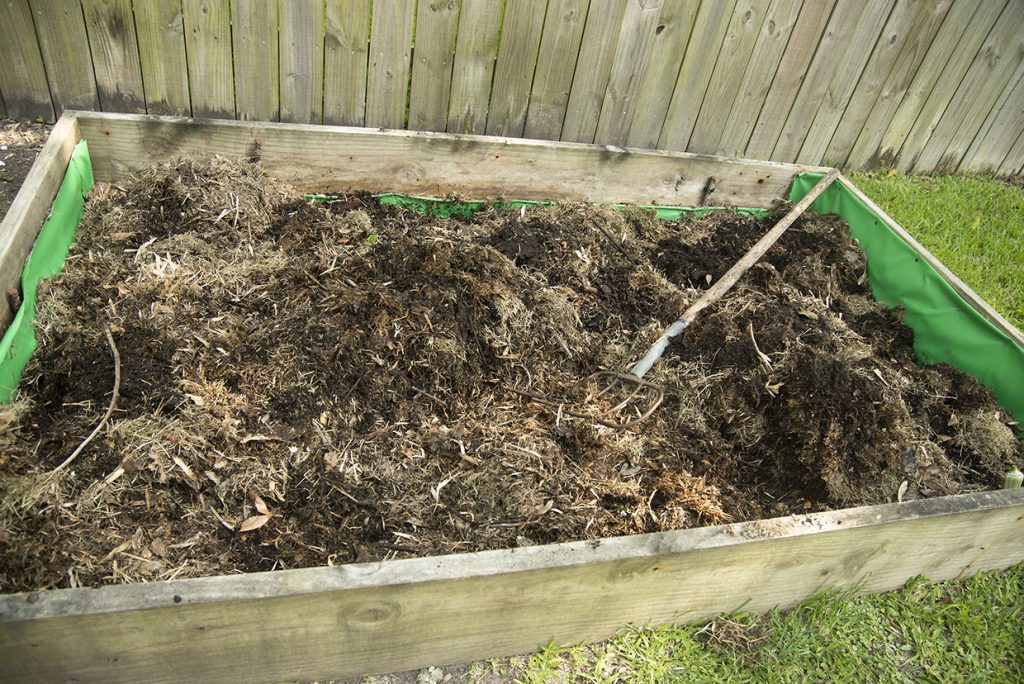
Turning the pile puts oxygen in it which the bacteria, aka germs, needs to work its magic. When the bacteria is working at optimal levels the pile heats up and on a cold day you can actually see steam rising from the compost box.
One day you’ll turn over the pile and the stuff on the bottom will be black with a loose texture and plenty of wiggling worms. It’s done! You and Mother Nature made dirt! Get a wheelbarrow, a shovel and start spreading. Be sure to mix it into the soil that is already there rather than just spread it on the ground where it will wash away in the first big rain. I once covered my neighbor’s driveway and clogged a town drain with half-decayed organic matter that floated off in a downpour. Covering the new ground with pine straw will help keep it all in place. Enjoy!

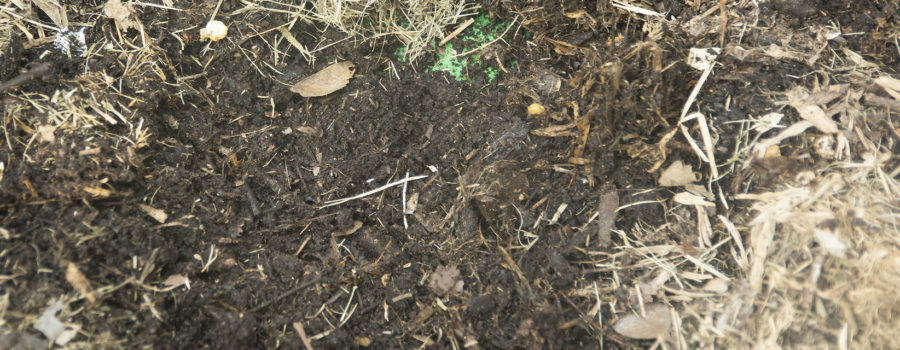
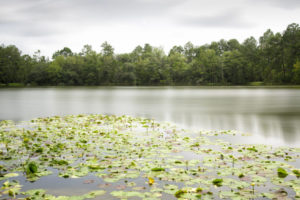


Recent Comments